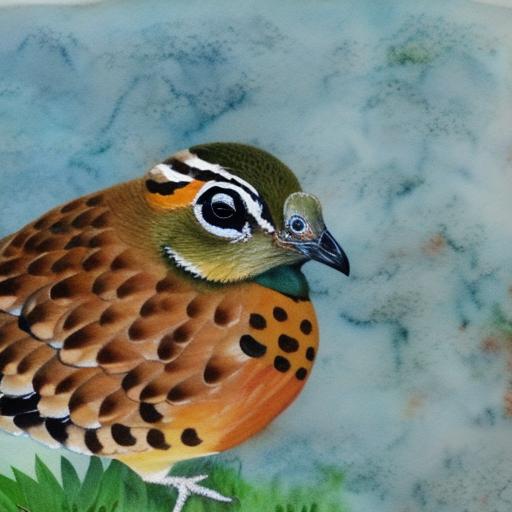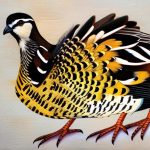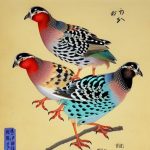Chinese Button Quail, also known as Chinese Painted Quail, are small, ground-dwelling birds that are popular among avian enthusiasts for their colorful plumage and charming personalities. Breeding Chinese Button Quail can be a rewarding and enjoyable experience for bird lovers, as these birds are relatively easy to care for and breed in captivity. Whether you are a seasoned breeder or a beginner, understanding the basics of Chinese Button Quail breeding is essential for success.
Breeding Chinese Button Quail requires careful consideration of factors such as selecting the right breeding pair, creating the ideal breeding environment, understanding the breeding process, and caring for the eggs and chicks. Additionally, it is important to be prepared for common breeding challenges that may arise and to have the necessary knowledge and resources to address them effectively. In this comprehensive guide, we will explore each of these aspects in detail and provide valuable tips for successful Chinese Button Quail breeding.
Key Takeaways
- Chinese button quail breeding is a rewarding hobby that requires careful selection of breeding pairs and creating the ideal breeding environment.
- When selecting the right breeding pair, it is important to consider their health, genetics, and compatibility to ensure successful breeding and healthy offspring.
- Creating the ideal breeding environment involves providing a suitable cage, nesting materials, and proper lighting and temperature conditions for the quails to thrive.
- Understanding the breeding process, including courtship behavior, egg laying, and incubation, is crucial for successful breeding and hatching of chicks.
- Caring for the eggs and chicks involves providing proper nutrition, warmth, and protection from predators to ensure their healthy development. Additionally, being prepared to address common breeding challenges such as infertility, egg binding, and chick mortality is essential for successful Chinese button quail breeding.
Selecting the Right Breeding Pair
Selecting the right breeding pair is crucial for successful Chinese Button Quail breeding. When choosing a breeding pair, it is important to consider factors such as the birds’ health, age, and genetic diversity. Healthy birds with no signs of illness or deformities should be chosen as breeding stock to ensure the production of strong and healthy offspring. Additionally, it is advisable to select birds that are at least six months old, as younger birds may not be mature enough for breeding.
Genetic diversity is also an important consideration when selecting a breeding pair. Inbreeding can lead to genetic abnormalities and health issues in offspring, so it is best to choose birds that are not closely related. Observing the birds’ behavior and compatibility is also important, as a harmonious pair is more likely to successfully breed and raise chicks. By carefully selecting the right breeding pair, breeders can increase the likelihood of producing healthy and vibrant offspring.
Creating the Ideal Breeding Environment
Creating the ideal breeding environment is essential for encouraging Chinese Button Quail to breed successfully. The breeding enclosure should provide ample space for the birds to move around comfortably and engage in natural behaviors such as dust bathing and foraging. A spacious enclosure also reduces stress and aggression between the breeding pair, which can hinder the breeding process.
The breeding enclosure should be equipped with suitable nesting sites, such as small, enclosed boxes or shelters filled with soft nesting material. These nesting sites should be placed in quiet, secluded areas of the enclosure to provide the breeding pair with privacy and security. Additionally, providing a balanced diet rich in protein, vitamins, and minerals is crucial for ensuring the health and fertility of the breeding pair. A diet consisting of high-quality commercial quail feed supplemented with fresh greens, fruits, and mealworms is recommended for optimal breeding condition.
Maintaining a stable environment with consistent temperature and lighting conditions is also important for successful breeding. Chinese Button Quail thrive in temperatures ranging from 60 to 75 degrees Fahrenheit and require a consistent light cycle of 14 to 16 hours of daylight to stimulate breeding behavior. By creating an ideal breeding environment, breeders can encourage their Chinese Button Quail to engage in natural breeding behaviors and increase the likelihood of successful reproduction.
Understanding the Breeding Process
Understanding the breeding process of Chinese Button Quail is essential for breeders to effectively support and monitor their birds’ reproductive activities. Chinese Button Quail are prolific breeders and can produce multiple clutches of eggs throughout the breeding season, which typically occurs from spring to early fall. Breeding behavior is often initiated by the male, who will court the female by performing a distinctive “bobbing” display and vocalizing to attract her attention.
Once the female is receptive to mating, she will crouch down and allow the male to mount her for copulation. After mating, the female will begin laying eggs within a few days, typically laying one egg per day until she has completed a clutch of 8-12 eggs. It is important to monitor the female’s egg-laying behavior and ensure that she has access to suitable nesting sites and materials to lay her eggs.
After the female has completed her clutch, she will begin incubating the eggs by sitting on them to keep them warm and facilitate embryonic development. The incubation period for Chinese Button Quail eggs is approximately 16-18 days, during which time the female will diligently tend to her eggs, turning them regularly and keeping them at a consistent temperature. Understanding these key stages of the breeding process allows breeders to provide appropriate support and care for their birds as they progress through each phase of reproduction.
Caring for the Eggs and Chicks
Caring for the eggs and chicks is a critical aspect of successful Chinese Button Quail breeding. Once the eggs have hatched, it is important to provide a safe and nurturing environment for the chicks to thrive. The brooding area should be equipped with a heat source such as a heat lamp or heating pad to maintain a temperature of around 95 degrees Fahrenheit for the first week of the chicks’ lives, gradually decreasing by five degrees each week until reaching ambient temperature.
It is essential to provide clean bedding material such as paper towels or pine shavings in the brooding area to ensure hygiene and prevent splay leg deformities in the chicks. Additionally, offering a balanced diet rich in protein is crucial for supporting the growth and development of the chicks. Commercial chick starter feed with a protein content of 24-28% is recommended for young quail chicks, supplemented with finely chopped greens and boiled eggs for added nutrition.
Monitoring the health and well-being of the chicks is also important during the early stages of their development. Regularly checking for signs of illness or deformities, such as pasty butt or splayed legs, can help identify and address potential health issues promptly. Providing access to clean water and ensuring that the chicks are able to feed and drink without difficulty is essential for their survival and growth. By providing attentive care and support for the eggs and chicks, breeders can increase the likelihood of raising healthy and robust offspring.
Dealing with Common Breeding Challenges

Breeding Chinese Button Quail may present various challenges that breeders should be prepared to address effectively. One common challenge is infertility, which may occur due to factors such as age, stress, or nutritional deficiencies in the breeding pair. Monitoring the birds’ behavior and reproductive activities can help identify signs of infertility, such as failed mating attempts or irregular egg production. Providing a balanced diet rich in protein, vitamins, and minerals can help support fertility in the breeding pair.
Another common challenge in quail breeding is egg binding, a condition in which a female quail is unable to lay her eggs due to physical obstruction or reproductive issues. Egg binding can be life-threatening if not addressed promptly, so it is important to monitor the female’s egg-laying behavior and seek veterinary assistance if she shows signs of distress or discomfort. Providing calcium supplements and ensuring that the female has access to suitable nesting sites can help prevent egg binding in breeding quail.
Additionally, aggression between breeding pairs or territorial disputes within a multi-bird enclosure can hinder successful breeding activities. Providing ample space and environmental enrichment such as hiding spots and perches can help reduce stress and aggression among quail pairs. Separating aggressive or incompatible birds may be necessary to prevent injury and facilitate successful breeding activities. By being aware of common breeding challenges and taking proactive measures to address them, breeders can promote a positive breeding experience for their Chinese Button Quail.
Tips for Successful Chinese Button Quail Breeding
In addition to understanding the key aspects of Chinese Button Quail breeding, there are several tips that can help breeders achieve success in their breeding endeavors. Providing a varied and nutritious diet that includes high-quality commercial quail feed, fresh greens, fruits, and protein sources such as mealworms can support the health and fertility of breeding quail. Additionally, offering environmental enrichment such as dust baths, perches, and hiding spots can promote natural behaviors and reduce stress in captive quail.
Regularly monitoring the birds’ behavior, reproductive activities, and overall health is essential for identifying potential issues early on and providing appropriate care and support. Keeping detailed records of breeding activities, egg production, and chick development can help breeders track their birds’ progress and make informed decisions regarding their breeding program. Seeking advice from experienced breeders or avian veterinarians can also provide valuable insights and guidance for successful Chinese Button Quail breeding.
In conclusion, Chinese Button Quail breeding can be a fulfilling and enjoyable experience for bird enthusiasts who are passionate about aviculture. By carefully selecting the right breeding pair, creating an ideal breeding environment, understanding the breeding process, caring for eggs and chicks, addressing common breeding challenges, and implementing valuable tips for success, breeders can increase their chances of achieving successful reproduction and raising healthy offspring. With dedication, knowledge, and attentive care, breeders can contribute to the conservation and appreciation of these charming little birds in captivity.
If you’re interested in Chinese button quail breeding, you may also want to check out this informative article on how many chickens you need for a family of 4. Understanding the dynamics of poultry farming and the number of chickens required for a family can provide valuable insights into managing and breeding Chinese button quails effectively.
FAQs
What is Chinese button quail breeding?
Chinese button quail breeding refers to the process of mating and raising Chinese button quails in order to produce offspring. This can be done for various reasons, such as for pets, for exhibition, or for commercial purposes.
How do you breed Chinese button quails?
Breeding Chinese button quails involves providing a suitable environment with proper temperature, humidity, and nesting materials. The male and female quails are introduced to each other, and the female will lay eggs in the nest. The eggs are then incubated until they hatch.
What do Chinese button quails eat during breeding?
During breeding, Chinese button quails should be provided with a balanced diet that includes a variety of seeds, grains, insects, and commercial quail feed. It is important to ensure that they have access to enough protein and calcium for egg production.
How long does it take for Chinese button quail eggs to hatch?
Chinese button quail eggs typically take around 16-18 days to hatch. It is important to maintain the proper temperature and humidity levels during the incubation period to ensure successful hatching.
What are some common challenges in Chinese button quail breeding?
Common challenges in Chinese button quail breeding include infertility, egg binding, and proper care of the chicks after hatching. It is important to monitor the breeding pairs closely and provide proper nutrition and care to ensure successful breeding.
Meet Walter, the feathered-friend fanatic of Florida! Nestled in the sunshine state, Walter struts through life with his feathered companions, clucking his way to happiness. With a coop that’s fancier than a five-star hotel, he’s the Don Juan of the chicken world. When he’s not teaching his hens to do the cha-cha, you’ll find him in a heated debate with his prized rooster, Sir Clucks-a-Lot. Walter’s poultry passion is no yolk; he’s the sunny-side-up guy you never knew you needed in your flock of friends!







